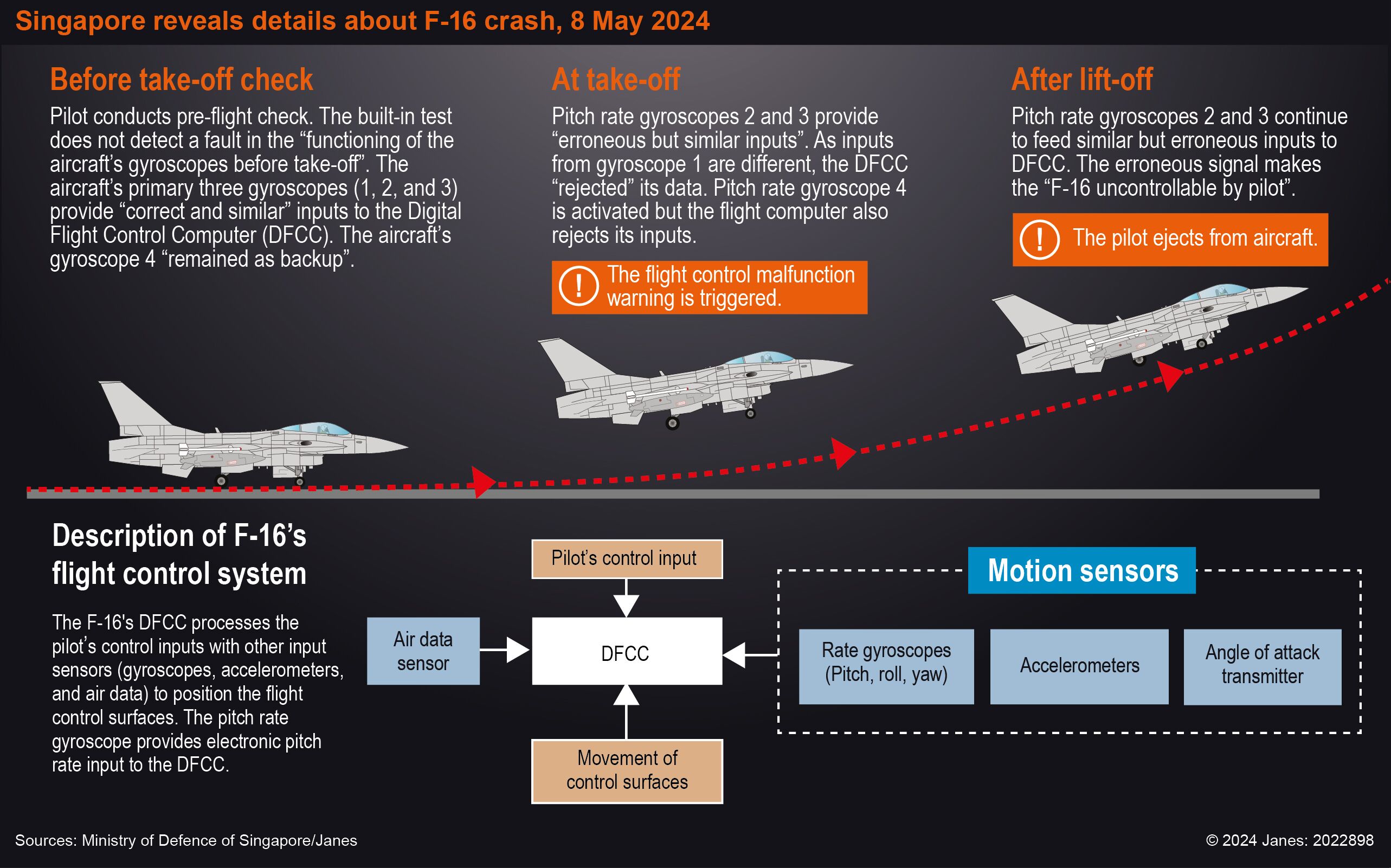
According to the Singapore Ministry of Defence (MINDEF), two faulty gyroscopes caused the 8 May 2024 crash of an air force Lockheed Martin F-16. (Ministry of Defence of Singapore/Janes)
The Singapore Ministry of Defence (MINDEF) has attributed the crash of a Republic of Singapore Air Force (RSAF) F-16 on 8 May to “degraded” gyroscopes. The F-16 crashed shortly after take-off from Tengah Air Base.
“The root cause of the malfunction has been attributed to degraded pitch rate gyroscopes, which form part of the motion sensors feeding inputs to the Digital Flight Control Computer (DFCC),” MINDEF said in its final report on the incident on 19 June.
According to the ministry, the gyroscope consists of a mechanical spinning rotor set within gimbals to help detect rotation rates. “This is then converted to electrical signal readings, which are fed to the flight computer,” MINDEF said.
The F-16 has four pitch rate gyroscopes. Three are in use during normal conditions, and one is used as backup, according to MINDEF.
“Specifically, two out of four pitch rate gyroscopes in the F-16 gave erroneous but similar inputs to the Digital Flight Control Computer,” MINDEF said. “This resulted in the flight control logic accepting the similar erroneous inputs as ‘correct', and sequentially rejecting the inputs from each of the remaining [two] functioning gyroscopes as ‘incorrect'.”
The DFCC manoeuvred the aircraft using erroneous pitch rate signals from the two degraded gyroscopes, making the “F-16 uncontrollable by the pilot”, MINDEF added.
The RSAF investigated the crash, supported by Lockheed Martin and the Transport Safety Investigation Bureau. The ministry said that according to Lockheed Martin this is the first such failure reported to the company since F-16s first flew in 1974.
Looking to read the full article?
Gain unlimited access to Janes news and more...







